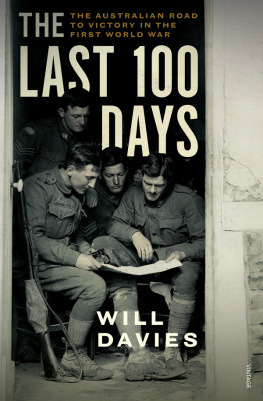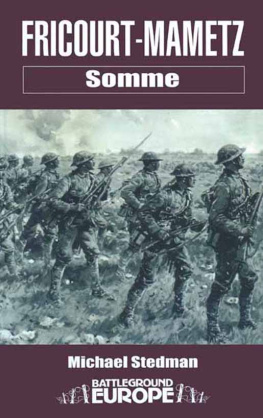A M I E N S
BEFORE AND DURING THE WAR
Copyright 1919 by Michelin & Cie.
All rights of translation, adaptation or reproduction (in part or whole)
reserved in all countries.


PANORAMA OF AMIENS.
ORIGIN
In the days of the Gauls, Amiens, then known as Samarobriva, or Bridge over the Somme, was the capital of the Ambiani, a tribe of Belgian origin. Later it passed under Roman domination, and in the fifth century under that of the Franks. Christianity was first preached there at the beginning of the fourth century, by St. Firmin, first bishop and martyr of Amiens. After the death of Charlemagne, the town became the property of the counts and bishops. The latter were unable to defend it against the Normans, who ravaged it on several occasions. In 1185, it was annexed to the royal dominions, under Philippe Auguste. On account of its position, between Paris and the sea, Amiens acquired great importance at that time, and became the store-house for all the goods sent down the river Somme for distribution over the whole of northern France. The manufacture of cloth and linen, and the preparation of woad (vegetable dye-stuff used on a very large scale in the Middle Ages) caused Amiens to become as rich and flourishing as the Flemish towns.
BRIEF DESCRIPTION
Built on the Somme, at the confluence of that river with its tributaries, the Avre and the Selle, and at the junction of nine different railways, Amiens is divided, topographically, into three parts.
To the south, is the higher or new town, bounded by two lines of boulevards planted with fine chestnut and linden trees, and occupying the site of the ancient ramparts. Between this double belt, rise the suburbs of Noyon, Henri-Ville, and Beauvais, with their straight streets, handsome mansions, and brick-built residences.
In the centre, extending as far as the river Somme, is the business part of the town, containing the shops, public buildings, and ancient monuments.
On the right bank, from the Somme to the lateral canal, which describes a large semi-circle between the ports dAmont et dAval, lies old Amiens or the lower town, with its narrow winding streets, wooden houses, workshops and factories, situated between the many arms of the river.
This quarter is dominated by the ancient citadel, and prolonged by the new suburbs of St. Maurice and St. Pierre, where the working population of the spinning mills and factories lives.
AMIENS DURING THE WAR
Twice during the War, the strategical importance of Amiens caused it to become the objective of the German armies.


GERMAN FOOT-SOLDIERS ENTERING AMIENS.
How the Germans occupied Amiens in 1914
After the battle of Charleroi, and in consequence of von Klucks manifest intention to outflank the left wing of the retreating Allies, Amiens became threatened.
At that time a group of divisions under General dAmade, comprising the 81st, 82nd, 84th, and 88th territorials, and the 61st and 62nd reserves, was stationed between Dunkirk and Mauberge, with orders to check enemy cavalry raids.
However, the front allotted to these troops was so long that they formed merely a thin curtain, which was obliged to retire before the approach of the first German army.
Amiens was then occupied by Moroccan troops, which were hurriedly despatched in the direction of Comon and Villers-Bretonneux, to organise defensive positions.
General dAmade arrived on August 27th.


NACH PARIS GERMAN FIELD KITCHEN.
His territorial divisions were sent by train to a point below the town, with orders to prevent the Germans from crossing the Somme. On the same day, the 61st and 62nd reserve divisions marched towards Pronne, their ultimate destination being south of the Somme. However, on debouching from Bapaume, they had an extremely violent engagement with a German army corps. The battle continued until the following day, eventually turning in favour of the enemy, and the two divisions were thrown back northwards.
Further to the east, General Sordets cavalry corps, which was supporting the left wing of the British army to the east of the line Le Catelet-Roisel, sought to check the German advance, but was unable to prevent the enemy from reaching the outskirts of Pronne on the evening of the 27th. The cavalry accordingly withdrew to the south of the Somme.
On the 28th, the enemy took Pronne, and marched on Amiens. The cavalry corps fell back towards the south.
On the 29th, General Maunoury, in command of a new army (the 6th), made the necessary dispositions to prevent his left from being out-flanked, and to check the enemy, whose advance-guards nearest Amiens had reached Bray-sur-Somme, Chuignolles and Framerville. In the first line were placed:






















